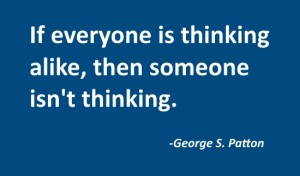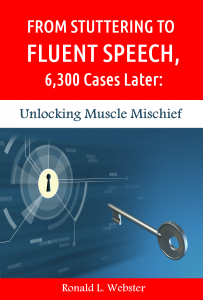The following continues the series of chapter excerpts from the breakthrough book on stuttering, From Stuttering to Fluent Speech, 6,300 Cases Later: Unlocking Muscle Mischief: 6.300 Cases Later, written by Ronald. L. Webster, Ph.D.
An expert on stuttering, Dr. Webster is a clinical psychologist, Professor Emeritus of psychology at Hollins University and President of Hollins Communications Research Institute (HCRI – www.stuttering.org.). Nonprofit HCRI, founded by Dr. Webster, is a world leader in stuttering research and therapy innovation. More than 6,500 individuals who stutter from 50 countries have come to HCRI for life-changing stuttering treatment.
CHAPTER 4 EXCERPT
The Legacy View of Stuttering
One of the perplexing problems with stuttering is that those who work in this problem area have failed to achieve an effective working definition for it. In fact, a few years ago, a panel of “experts” was charged with the task of evaluating stuttering and developing a solid answer to the question of its definition.
 The ironic outcome of the year-long effort and a number of meetings was a report presented at an annual convention of the American Speech Language and Hearing Association in which the experts stated that they were not able to define stuttering. Something is wrong with this outcome.
The ironic outcome of the year-long effort and a number of meetings was a report presented at an annual convention of the American Speech Language and Hearing Association in which the experts stated that they were not able to define stuttering. Something is wrong with this outcome.
The paradox is that most people, professionals or not, seem to be able to identify the presence of stuttering. Difficulties arise when attempts are made to sort out the events of stuttering: the repetitions of sounds, syllables, and words; the prolongation of syllable initial sounds; and the blockage of attempts to initiate voicing, the vibration of the vocal folds that represents a component of many, but not all, speech sounds.
It is at this level of sorting out and classifying each disfluency where clinical judgment becomes less reliable: Was that distorted sound a prolongation, or was it an instance of voice blockage? Was it a combination of a repetition and a prolongation, or was it a case of voice blockage associated with a repetition?
The task becomes even more difficult when the observed disfluencies are barely discernable—when they are at the limits of observer detection. Note, however, that the speech events from which stuttering can be inferred are real, have physical features, and can be observed with at least modest reliability. This is not the end point in constructing a more complete definition of the events in the problem of stuttering. It is simply the practical beginning.
… [end of excerpt from Chapter 1]
For more information about From Stuttering to Fluent Speech, 6,300 Cases Later: Unlocking Muscle Mischief, visit Amazon.com. To learn more about HCRI stuttering therapy, click here: www.stuttering.org.


.jpg)

